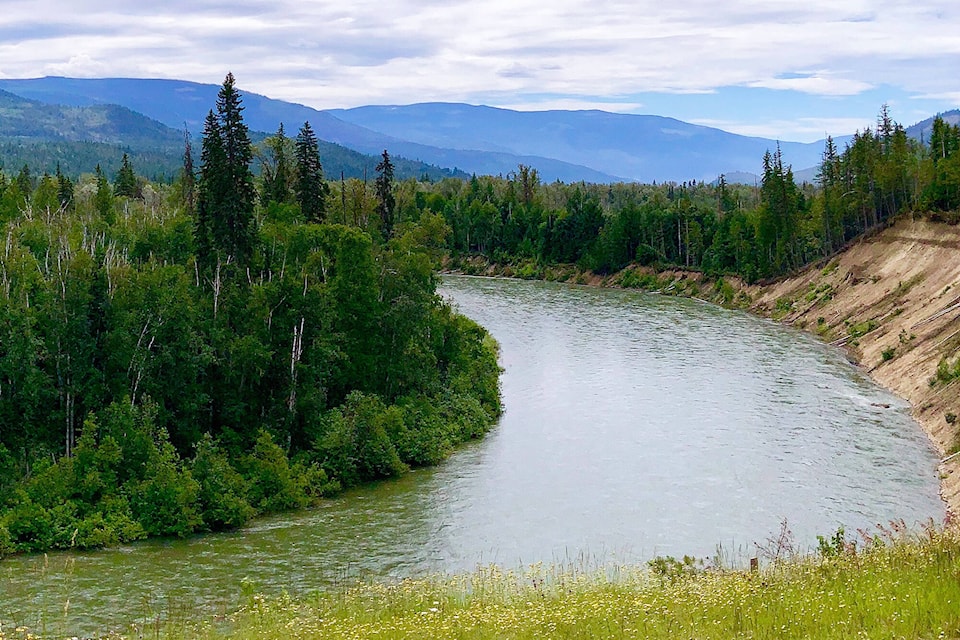Results of a study of melting of glaciers that feed the Adams River may spur change to water management in the coming years.
A Thompson Rivers University (TRU) research team is studying glaciers in the headwaters of the Adams River, seeking to understand the influence glacial melt is having on the overall hydrology of the river system, explains Tay Powrie, a TRU working on the project, in a July 10 media release by the Shuswap Watershed Council (SWC).
“There could be impacts to salmon habitat, domestic water use and water quality,” said Powrie.
The SWC explained the Adams River – a large tributary to Shuswap Lake – is important for fish habitat, domestic water security, and to the water quality of Shuswap Lake.
“Glaciated mountains in the upper reaches of the river supply source water to the Adams River system; however, the glaciers are not well understood and they may be under stress due to climate change,” reads the media release.
Previous studies have shown there has been an increased rate of glacier area loss and fragmentation in Western Canada since the early 2000s.
“It’s important to understand how these shifts might impact the hydrology in local watersheds,” said Powrie.
The study of local glaciers was initiated by the Shuswap Environmental Action Society (SEAS), beginning in 2016 with the hiring of Forsite Consultants to analyze satellite imagery to determine how much the glaciers were melting, and and then have them look agani in another five years, explained SEAS president Jim Cooperman who, in 2021, saw the heatdome was exacerbating glacier melt. This led to the rapid rise of the Adams River in early July. In response, TRU hydrologist Thomas Pypker told the Observer, “Most of our glaciers – in fact, I think all now, are receding, and it’s expected about 90 per cent in our mountains locally will be gone by the end of the century.”
READ MORE: Rising rivers in the Shuswap raise alarm about accelerated glacier melt
READ MORE: The province’s glaciers are melting
Pypker said the 2021 heat dome had accelerated what was already a melting scenario, and the melting scenario is connected to climate change.
“In the past, we’ve had extreme heat waves. The reality is we’re going to have them more frequently, and those more frequent heat waves are going to then cycle back and feedback into melting the glaciers faster,” said Pypker, adding all of this will have serious implications on everything from the agricultural industry to salmon migration.
In its 2022 Adams Lake Glacier Assessment update, using satellite imagery from 1985 and 2015, Forsite found “it appears some glaciers in the project area have receded over the 30-year time period between 1985 and 2015. Percent loss calculated within the selected analysis areas ranged from approximately 15 – 35%”
Cooperman said there are plans to do another analysis with Forsite in 2027.
“In the meantime, the TRU project will be doing for more intensive work, and I hope to be able to join them if they get a helicopter to land on one of the glaciers,” Cooperman told the Observer.
The current TRU study is a two-year research project expected to wrap up in late 2024. The team is using ice-penetrating radar as part of their methodology to validate glacier coverage in the Adams River basin, explained the SWC. The research will also quantify historical glacier change and model future glacial run-off based on climate projections.
“Research outcomes will ultimately shed some light on whether new water management regimes may be needed for the Adams River, as climate change and glacial melt affect the river’s hydrological cycle,” said the SWC.
The research is supported by funding from the Natural Sciences and Engineering Research Council (NSERC), a federal agency that provides funding for university-based research and student training, and the SWC.
NSERC is providing $39,000 over two years and the SWC is providing $8,000 over the same period.
“This research is the first of its kind in the Shuswap watershed,” said SWC chair Jay Simpson. “We’re pleased to be supporting this research, and we look forward to hearing the results.”
lachlan@saobserver.net
Like us on Facebook and follow us on Twitter
Sign up for our newsletter to get Salmon Arm stories in your inbox every morning.
